Jurassic World (2015) – Full Movie Analysis, Plot, Themes & Cultural Impact
Introduction
Cinema has always been a medium that allows humanity to explore the impossible, to witness what we could never experience in real life. Few films embody this spirit of awe and imagination better than Jurassic World (2015), the long-awaited revival of the Jurassic Park franchise. Released more than two decades after Steven Spielberg’s Jurassic Park (1993), Jurassic World brought dinosaurs back to the big screen in spectacular fashion, drawing both nostalgia-driven audiences and a new generation of viewers into its thrilling story.
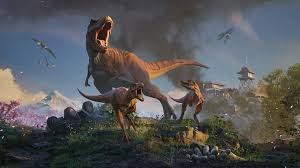
The Jurassic series has always balanced three central elements: scientific curiosity, human ambition, and the raw, uncontrollable power of nature. Where the original trilogy explored the dangers of cloning and tampering with genetics, Jurassic World expanded these themes for a 21st-century audience, reflecting modern concerns about consumerism, corporate greed, and humanity’s insatiable desire for control.
The film is more than just a blockbuster. It is a cultural statement, showing how storytelling evolves over time. In many ways, Jurassic World serves as both a sequel and a reboot: it continues the saga while reintroducing dinosaurs with upgraded visuals, new characters, and a fresh storyline. But it also pays homage to the legacy of Spielberg’s original masterpiece, reminding us why the idea of resurrecting dinosaurs has fascinated us for decades.
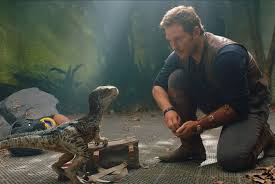
The Legacy of Jurassic Park
Before Jurassic World, the Jurassic Park franchise had left a mixed impression. Spielberg’s first film was revolutionary, blending cutting-edge CGI and animatronics to create the most realistic dinosaurs ever seen on screen. Its sequels, The Lost World: Jurassic Park (1997) and Jurassic Park III (2001), were successful but failed to capture the same magic.
By the early 2000s, the franchise seemed dormant. Audiences still remembered the wonder of the original film, but the world of cinema had changed. Technology had advanced, audiences demanded more complex stories, and Hollywood was entering a new era of reboots and revivals. When Universal Pictures announced Jurassic World, expectations were sky-high.

The challenge was immense: how do you make dinosaurs feel new and exciting in an age when audiences have seen everything from superhero battles to photorealistic CGI creatures? The answer lay in combining nostalgia with modern spectacle—something Jurassic World managed remarkably well.
Development & Production
The road to Jurassic World was long and complicated. Plans for a fourth Jurassic Park film had been circulating since the early 2000s. Various screenwriters pitched ideas, ranging from bizarre human-dinosaur hybrids to military-trained raptors. Most of these early concepts were scrapped, as they strayed too far from the essence of the franchise.
Finally, director Colin Trevorrow, known for his indie film Safety Not Guaranteed (2012), was chosen to helm the project. Though relatively unknown, Trevorrow had a strong vision: he wanted to capture the awe of the original film while updating its themes for modern times. Steven Spielberg, serving as executive producer, approved of Trevorrow’s approach.
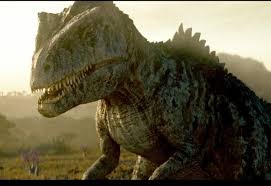
The script, co-written by Trevorrow and Derek Connolly, focused on the idea of a fully functioning dinosaur theme park—something fans had always wanted to see. In Jurassic Park, John Hammond’s dream never reached its potential due to chaos and disaster. But Jurassic World shows us what that dream would have looked like if it succeeded.
Casting Choices
The film’s casting also played a major role in its success. Chris Pratt, fresh off his breakthrough role as Star-Lord in Guardians of the Galaxy (2014), was cast as Owen Grady, the rugged ex-Navy raptor trainer. His charm, humor, and action-hero energy made him a natural fit.
Bryce Dallas Howard was chosen to play Claire Dearing, the park’s operations manager. Her character arc—from a cold, corporate executive to a courageous protector—was central to the story. The dynamic between Owen and Claire provided both tension and humor, balancing the action with human emotion.
Supporting actors included Vincent D’Onofrio as Vic Hoskins, a military contractor obsessed with weaponizing dinosaurs, and Irrfan Khan as Simon Masrani, the park’s ambitious but naive owner. Two young actors, Ty Simpkins (Gray) and Nick Robinson (Zach), played Claire’s nephews, serving as audience surrogates who experience the park with childlike wonder before facing its horrors.
Filming & Effects
A major selling point of Jurassic World was its visual spectacle. While the original Jurassic Park pioneered the use of CGI, Jurassic World had access to two decades of technological advancements. Industrial Light & Magic (ILM) created photorealistic dinosaurs, blending CGI with animatronic models from Legacy Effects.
The film was shot in locations such as Hawaii (Oahu and Kauai) and Louisiana, capturing lush jungle landscapes and large-scale sets. The fictional park itself was designed to resemble a luxury resort, complete with attractions like the Mosasaurus lagoon and the Gyrosphere Valley.
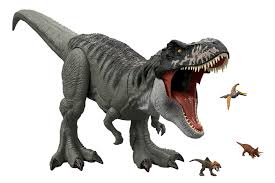
Colin Trevorrow insisted on practical effects where possible. For example, the Apatosaurus death scene used a life-size animatronic model to enhance emotional impact. This mixture of practical and digital effects maintained a sense of realism, making the dinosaurs feel more tangible than purely computer-generated creatures.
Marketing & Anticipation
Universal Studios launched one of the biggest marketing campaigns in film history for Jurassic World. The fictional park was promoted as if it were real, with websites, advertisements, and viral marketing campaigns that showcased rides, merchandise, and even mock safety warnings. This immersive strategy built massive anticipation before the film’s release.
When the first trailer dropped in late 2014, fans were electrified. The sight of a fully operational park, Chris Pratt training raptors, and the terrifying new hybrid dinosaur (the Indominus Rex) captured imaginations worldwide.
Release & Box Office Success
Jurassic World premiered on June 12, 2015, and immediately shattered box office records. It grossed over $1.67 billion worldwide, making it the third-highest-grossing film of all time at the time of release (behind Avatar and Titanic).
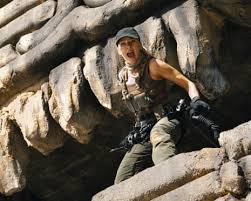
Audiences praised its thrilling action sequences, nostalgic callbacks, and spectacular visuals. Critics were more divided, with some pointing out its formulaic plot and thin character development. Still, the overwhelming commercial success proved that the Jurassic brand was as powerful as ever.
Transition to Story & Themes
With this foundation in place—the production journey, casting, and release—it’s clear that Jurassic World was designed to reignite the magic of dinosaurs on screen. The next step is to dive into the film’s story itself, exploring the plot in detail and analyzing the themes it brings to life.
Opening & Setting the Stage
The film begins with a striking image: dinosaur eggs cracking open, revealing clawed feet that mirror the feet of modern birds. This visual immediately reminds viewers of the evolutionary connection between dinosaurs and birds, a theme first introduced in Jurassic Park.
We are then introduced to Gray and Zach Mitchell, two brothers who are being sent on a trip to Jurassic World by their parents, who are quietly struggling with marital problems. Their aunt, Claire Dearing, is the park’s operations manager, and she will serve as their guardian during their stay. From the outset, the brothers represent two audience perspectives: Gray embodies childlike wonder and fascination with dinosaurs, while Zach, a teenager, is initially detached and unimpressed, reflecting a more cynical audience mindset.
Welcome to Jurassic World
The boys arrive on Isla Nublar, where John Hammond’s dream has finally come true: a fully operational theme park filled with living dinosaurs. Visitors ride monorails, shop in branded stores, and explore vast attractions. The park is portrayed as a consumer paradise, blending the spectacle of Disneyland with the scientific marvel of resurrected dinosaurs.
The grandeur of the park is highlighted through attractions such as:
The Mosasaurus Lagoon, where a giant marine reptile leaps from the water to devour a shark in front of a cheering crowd.
The Gyrosphere Ride, allowing visitors to roam among peaceful herbivores in open fields.
The Gentle Giants Petting Zoo, where children can ride baby Triceratops.
This opening sequence serves a dual purpose: it delivers the awe audiences expect, while also hinting at the dangers of turning nature into entertainment.
Corporate Pressure & Indominus Rex
Claire introduces Simon Masrani, the billionaire owner of Jurassic World. Unlike John Hammond, who was motivated by wonder, Masrani is portrayed as both idealistic and reckless. He insists the park must continue to create new attractions to keep guests excited.

The problem is that audiences have grown desensitized to dinosaurs. As Claire explains to potential investors, “No one’s impressed by a dinosaur anymore.” To meet market demands, the park’s geneticists, led by Dr. Henry Wu, have created a new hybrid: the Indominus Rex. Engineered with DNA from multiple species, the Indominus is larger, smarter, and more dangerous than any natural dinosaur. Its existence embodies the film’s central theme: corporate greed and humanity’s obsession with control over nature.
Owen Grady & the Raptors
Meanwhile, we are introduced to Owen Grady, an ex-Navy animal behaviorist who has been training a group of Velociraptors. Unlike most park staff, Owen respects the dinosaurs as living creatures rather than attractions. His bond with the raptors—Blue, Delta, Echo, and Charlie—is built on mutual trust, though he acknowledges that they can never be fully controlled.
This subplot introduces Vic Hoskins, head of InGen’s security division, who sees the raptors as potential military assets. Hoskins argues that they could be used like trained dogs in combat zones. Owen strongly rejects this idea, warning that weaponizing predators is reckless and unethical. This tension sets up one of the film’s central conflicts: whether dinosaurs should be respected as animals or exploited as weapons.

The Indominus Breakout
Claire and Masrani ask Owen to inspect the Indominus enclosure. Owen immediately notices design flaws: the paddock is small, isolated, and designed like a prison. His concern is validated when the Indominus displays intelligence far beyond expectations, masking its heat signature to trick staff into thinking it has escaped.
During an inspection, the Indominus stages a brutal breakout, killing several workers and forcing Owen into a desperate escape. This sequence emphasizes the creature’s cunning and viciousness—it doesn’t just kill for food, but for sport.
Park in Chaos
As the Indominus rampages through the park, Claire realizes her nephews are lost in the chaos. She sets out with Owen to find them, beginning her transformation from detached corporate figure to caring protector.
Meanwhile, the brothers wander into the Gyrosphere Valley, where the Indominus eventually attacks them. In one of the film’s most intense scenes, the Indominus smashes the glass sphere and nearly kills them. The boys narrowly escape by plunging into a river.
Elsewhere, the Indominus continues its rampage, killing for fun and even destroying a group of Ankylosaurs. The film highlights its unnaturalness: unlike the other dinosaurs, it is not a part of nature but a man-made weapon that destabilizes the ecosystem.
The Aviary Attack
In a desperate attempt to stop the Indominus, Masrani pilots a helicopter to attack it. However, the creature breaks into the aviary, releasing hundreds of Pteranodons and Dimorphodons. The flying reptiles swarm the park’s main street, attacking terrified guests.
This sequence mirrors the chaos of Spielberg’s original film while updating it for modern spectacle. Amid the panic, Zara, Claire’s assistant, suffers a shocking death as she is carried by Pteranodons and ultimately devoured by the Mosasaurus. This moment sparked debate among fans due to its unusually graphic nature for a non-villain character.
The Fall of Jurassic World
After Masrani dies in the helicopter crash, Hoskins seizes control. He orders Owen’s raptors to be deployed against the Indominus, treating them like military weapons. Initially, the raptors seem to obey, but it is soon revealed that the Indominus has raptor DNA—and it communicates with them. The raptors turn on the humans, showing once again that nature cannot be controlled.
During this chaos, Owen, Claire, and the boys regroup. Owen reestablishes his bond with Blue, regaining the raptors’ loyalty. Hoskins, meanwhile, attempts to justify his militarization plans to Claire and the children, but he is abruptly killed by a raptor, symbolizing the failure of human arrogance.

The Final Battle
As the Indominus closes in, Claire makes a bold decision. She releases the park’s Tyrannosaurus Rex, the same iconic dinosaur from the original Jurassic Park. The T. rex engages the Indominus in a brutal battle, joined by Blue the raptor. Together, they fight the hybrid in an epic clash of natural versus artificial.
Just as the Indominus gains the upper hand, it is dragged into the lagoon by the Mosasaurus, which delivers the final, spectacular death blow. The hybrid is gone, but the park is left in ruins.
Resolution
In the aftermath, survivors gather as the military evacuates the island. Gray and Zach reunite with their parents, while Owen and Claire walk away together, hinting at a new relationship.
The final shot shows the T. rex standing atop the ruins of the park, roaring triumphantly. This image symbolizes nature reclaiming dominance over humanity’s failed attempts at control.
Transition to Themes & Analysis
The plot of Jurassic World is a mix of nostalgia, spectacle, and modern anxieties. On one level, it delivers thrilling action and dinosaur battles. On another, it critiques consumerism, corporate greed, and humanity’s arrogance in believing nature can be mastered.
In the next section, we’ll explore these themes and deeper analysis—the ideas that make Jurassic World more than just a blockbuster.
Themes & Analysis
Blockbuster films are often judged by their ability to entertain, but the Jurassic franchise has always carried deeper layers of meaning. At its heart, Jurassic World is not just about dinosaurs running wild—it is about humanity’s hubris, the consequences of unchecked ambition, and our relationship with both science and nature. The film takes the philosophical foundation of Jurassic Park and reframes it for the 21st century.
1. Science vs. Nature
One of the central themes of the original Jurassic Park was expressed through Ian Malcolm’s famous line: “Life finds a way.” That message carries into Jurassic World, but with a modern twist.
In Jurassic Park, humans were attempting to resurrect extinct creatures, a bold act of science tampering with nature. In Jurassic World, that boundary has already been crossed—the dinosaurs are alive, the park is operational, and humanity has seemingly triumphed over nature. The problem is no longer whether we can create dinosaurs, but whether we can keep controlling them.
The Indominus Rex embodies this dilemma. It is not a natural species but a patchwork monster created for entertainment value. The park’s scientists splice DNA from multiple animals—T. rex, Velociraptor, cuttlefish, frog, and more—without considering the ecological or ethical consequences. The result is a predator with unnatural abilities: camouflage, extreme intelligence, and aggression.
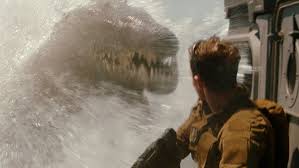
By the end of the film, nature reasserts itself. The Indominus, humanity’s manufactured weapon, is destroyed by a coalition of “natural” dinosaurs: the T. rex, Blue, and the Mosasaurus. This outcome reinforces the message that science may manipulate life, but nature always has the final say.
2. Consumerism and Corporate Greed
A second major theme is the commercialization of science. The park itself is a metaphor for consumer culture—dinosaurs packaged and sold as entertainment. The film frequently draws parallels between modern corporations and Jurassic World’s fictional management.
Claire Dearing epitomizes this mindset at the beginning of the film. She refers to dinosaurs as “assets,” reducing living creatures to financial figures on a spreadsheet. Sponsors play a role in funding genetic research, with discussions of naming the Indominus after a corporate brand (e.g., “Pepsi-saurus” or “Verizon Wireless presents the Indominus Rex”). These satirical touches critique the real-world trend of corporate sponsorship infiltrating every aspect of entertainment.
The idea that dinosaurs are no longer “wow enough” mirrors the entertainment industry itself. Audiences are constantly desensitized by bigger spectacles, forcing companies to go further, faster, and riskier. Just as Hollywood must create bigger blockbusters to maintain interest, Jurassic World’s scientists must create scarier dinosaurs to keep the park profitable. The result is escalation without foresight—a cycle that inevitably leads to disaster.
3. Human Relationships and Family
Beneath the spectacle, Jurassic World also explores human relationships, particularly family dynamics. The subplot of Gray and Zach’s parents’ impending divorce grounds the film in emotional reality. While their parents struggle to hold their marriage together, the brothers themselves are forced to bond through survival.
Claire’s arc also intersects with this theme. At the beginning, she is career-driven and emotionally distant, treating even her nephews as inconveniences. Over the course of the film, her priorities shift. Protecting the children forces her to confront her humanity, and by the end she has evolved into a more empathetic, courageous figure.
Owen, on the other hand, represents instinct, loyalty, and respect for life. His paternal dynamic with the raptors mirrors a family structure—he acts as their alpha, but with trust rather than dominance. His bond with Blue, in particular, becomes a surrogate father-daughter relationship, showing that connection and respect, not control, define real leadership.
Together, Owen and Claire’s arcs complement each other: he softens her rigidity, while she grounds his idealism. Their dynamic is part romance, part ideological partnership, symbolizing a balance between reason and instinct.
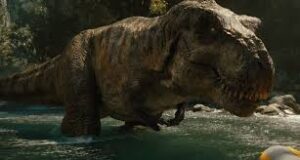
4. Militarization and Ethical Boundaries
The subplot involving Hoskins and the InGen security division introduces another theme: the militarization of science. Hoskins views the raptors as military assets, arguing they could be more effective than drones or dogs. He frames this as innovation, but in truth it is exploitation.
This reflects real-world anxieties about how scientific advancements are often weaponized. Genetic engineering, artificial intelligence, and biotechnology all carry potential for misuse. The film warns that once corporate or military interests seize control, ethical considerations vanish.
Owen’s rejection of Hoskins’ plan is telling. As someone with military experience, he understands the dangers of forcing animals—or people—into roles they were not meant for. Hoskins’ death at the hands of a raptor is symbolic justice: a man who wanted to use predators as weapons becomes prey himself.
5. Spectacle vs. Reality
Another important theme is the nature of spectacle itself. Jurassic World is a meta-commentary on blockbuster cinema. Just as park guests demand “bigger, louder, more teeth,” movie audiences demand grander spectacles. The Indominus Rex represents the film industry’s response to this hunger—a creature engineered to be “cooler” than a T. rex, much like sequels are engineered to outdo their predecessors.
Colin Trevorrow intentionally plays with this meta-narrative. The Gyrosphere ride, the Mosasaurus feeding show, and the corporate branding within the park all mirror real-world theme parks and movie marketing. The film critiques the very system that produced it, even as it indulges in its own spectacle.
6. Control, Hubris, and Chaos Theory
At its core, Jurassic World is a story of human hubris—the belief that nature can be controlled and commodified. Claire believes she can manage the park with schedules and spreadsheets. Masrani believes he can balance profit with responsibility. Hoskins believes predators can be turned into soldiers. Dr. Wu believes science can create without ethical limits.
Each of these beliefs crumbles. The Indominus destroys the illusion of control, reminding us of Ian Malcolm’s chaos theory from the first film: complex systems cannot be contained, and small changes create unpredictable consequences.
The final scenes drive this point home. It is not humans who save the day but dinosaurs themselves. The T. rex, Blue, and the Mosasaurus restore natural balance, defeating the hybrid not out of morality but instinct. Nature reclaims its power, indifferent to human concerns.
7. Gender & Character Representation
Some critics also highlighted gender dynamics in the film. Claire’s transformation from corporate manager to action survivor sparked debate. On one hand, it was criticized for reinforcing stereotypes—her “cold businesswoman” persona needed to be softened by maternal instincts. On the other hand, others praised her arc as one of empowerment, as she grows into a decisive, courageous leader.
The film also leans into traditional gender archetypes with Owen as the rugged action hero and Claire as the structured planner. Their contrast reinforces the film’s broader theme of balance: instinct and logic, nature and science, male and female perspectives all converging in survival.
Summary of Themes
Science vs. Nature: The Indominus represents human arrogance; nature ultimately prevails.
Consumerism: Dinosaurs are commodified just as films are; spectacle replaces wonder.
Family & Relationships: The survival story doubles as a journey toward emotional connection.
Militarization: Exploitation of science mirrors real-world ethical concerns.
Spectacle & Meta-Critique: The film critiques its own blockbuster status.
Hubris & Chaos Theory: The illusion of control is shattered; nature cannot be mastered.
Transition to Characters & Performances
Having explored the thematic backbone of Jurassic World, the next logical step is to examine the characters themselves—how they embody these ideas and how the performances bring them to life.
Characters & Performances
Owen Grady (Chris Pratt)
Owen Grady is the heart of Jurassic World. A former Navy veteran turned animal behaviorist, Owen bridges the gap between military discipline and natural instinct. His most defining characteristic is his respect for the dinosaurs, particularly the Velociraptors under his care. Unlike most park staff who treat dinosaurs as “assets” or tools, Owen acknowledges their intelligence, emotions, and individuality.
Chris Pratt’s performance channels both charm and rugged authority. Fresh off his breakout role as Star-Lord in Guardians of the Galaxy (2014), Pratt brought charisma and humor to Owen, balancing action-hero toughness with relatable humanity. His interactions with the raptors—especially Blue—are played with sincerity, making the bond believable.
Symbolically, Owen represents humility in the face of nature. His warnings about the Indominus go ignored, just as Malcolm’s warnings were ignored in Jurassic Park. Where others see control, Owen sees risk. This respect for the natural order makes him the film’s moral center.
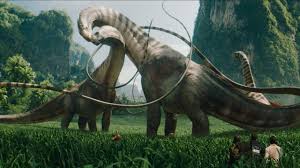
Claire Dearing (Bryce Dallas Howard)
Claire undergoes the most significant transformation in the film. At the start, she is a corporate executive embodying efficiency, detachment, and consumer logic. She views dinosaurs as “assets,” values statistics over feelings, and initially neglects her nephews. Her crisp white outfit and high heels visually reinforce her controlled, rigid persona.
As the crisis escalates, Claire evolves. Her protective instincts emerge as she fights to save Gray and Zach. She shows courage, resourcefulness, and leadership, ultimately releasing the T. rex in a desperate gamble to stop the Indominus. By the end, she is no longer the detached manager but a fully engaged protector and partner.
Bryce Dallas Howard’s performance received mixed reviews, with some critics arguing that her arc relied too heavily on stereotypes about women needing to embrace “maternal” instincts. Others, however, praised her for delivering an empowering transformation, one that challenged her rigid worldview and brought balance between logic and emotion.
Her dynamic with Owen is equally important. While Owen represents instinct and respect for nature, Claire represents corporate order and control. Their evolving partnership embodies the film’s larger theme of reconciling human ambition with humility toward nature.
Gray and Zach Mitchell (Ty Simpkins & Nick Robinson)
The two brothers serve as audience surrogates. Gray, the younger sibling, embodies wonder. His fascination with dinosaurs mirrors the childlike awe that defined the original Jurassic Park. He is enthusiastic, curious, and emotionally vulnerable, symbolizing innocence.
Zach, the older brother, is more cynical. He initially finds the park unimpressive, more interested in flirting with girls than marveling at dinosaurs. Over time, however, his protective instincts emerge, and he begins to appreciate the wonder he once dismissed.
Their relationship reflects the emotional core of the story. In a world consumed by spectacle, the brothers remind us of the human cost of disaster. Their subplot about their parents’ divorce also grounds the film in relatable stakes. While dinosaurs dominate the screen, the brothers’ survival and bond give the story heart.
Simon Masrani (Irrfan Khan)
Simon Masrani, the billionaire owner of Jurassic World, is one of the film’s most interesting supporting characters. Unlike John Hammond, whose dream was fueled by pure wonder, Masrani embodies modern corporate optimism. He believes profit and progress can coexist with responsibility.
Irrfan Khan portrays Masrani with warmth and charisma, making him likable despite his flaws. His insistence on creating “something bigger” reflects both idealism and recklessness. His death in the helicopter crash is symbolic: a visionary undone by his own overconfidence.
Masrani’s character demonstrates that good intentions are not enough when dealing with forces beyond control. His optimism blinds him to the reality of the Indominus, reinforcing the film’s message that nature cannot be dictated by corporate ambition.
Vic Hoskins (Vincent D’Onofrio)
Vic Hoskins, head of InGen security, is the film’s most overtly villainous character. Unlike Masrani, who seeks profit through spectacle, Hoskins sees dinosaurs purely as weapons. He pushes for Owen’s raptors to be deployed as military assets, framing his plan as innovation.
Vincent D’Onofrio delivers Hoskins with a mix of arrogance and pragmatism, portraying him as the kind of opportunist who thrives in crises. His death at the hands of a raptor is fitting poetic justice, symbolizing the folly of trying to weaponize nature.
Hoskins represents the darker side of human ambition—the exploitation of science for power and war. His presence expands the scope of the story, showing that the threat of dinosaurs is not just about survival but also about human misuse.
Dr. Henry Wu (BD Wong)
Dr. Wu is the only returning character from Spielberg’s original Jurassic Park. In Jurassic World, his role is expanded. No longer a minor geneticist, Wu is portrayed as a brilliant but morally ambiguous scientist. He rationalizes his creation of the Indominus by claiming that every dinosaur in the park is already genetically engineered, not “natural.”
BD Wong plays Wu with calm precision, embodying a scientist who believes knowledge justifies action. His survival at the end (evacuated with dinosaur embryos) sets the stage for future films, where his work continues to blur ethical boundaries.
Wu represents the unchecked power of science divorced from morality. His loyalty lies not to nature or humanity, but to progress and profit.
The Raptors: Blue, Delta, Echo, and Charlie
The Velociraptors are more than just monsters; they are characters in their own right. Blue, in particular, emerges as one of the film’s emotional anchors. Her bond with Owen represents mutual trust and loyalty.
The raptors’ temporary alliance with the Indominus highlights their intelligence and the dangers of genetic manipulation. But when Blue turns against the hybrid to support Owen, it provides one of the film’s most powerful moments. She embodies the idea that respect, not domination, fosters true loyalty.
Blue’s survival at the end, watching over the island, sets her up as a recurring figure in later sequels. She represents the balance between wild instinct and emotional connection.
The Indominus Rex
Though not human, the Indominus Rex is arguably the film’s most significant “character.” Created in a lab to impress visitors, it is a predator without natural purpose, embodying greed, arrogance, and spectacle. Unlike the T. rex or raptors, it has no place in the natural order—it is a product of human vanity.
The Indominus is designed to kill for sport, not survival. Its intelligence, camouflage, and aggression make it a nightmare not just as a predator but as a metaphor. It represents humanity’s worst impulses: the desire to dominate nature, to create monsters for profit, and to ignore ethical limits.
The creature’s eventual downfall at the hands of “natural” dinosaurs reinforces the idea that authenticity triumphs over artificiality. In many ways, the Indominus is less a villain than a reflection of human hubris.
Supporting Cast
Other characters contribute depth and humor:
Lowery Cruthers (Jake Johnson), a control-room technician, serves as comic relief while also voicing skepticism about corporate greed. His vintage Jurassic Park T-shirt symbolizes nostalgia and respect for Hammond’s original vision.
Zara (Katie McGrath), Claire’s assistant, provides one of the film’s most shocking deaths, underscoring the unpredictability of chaos.
Barry (Omar Sy), Owen’s assistant, demonstrates compassion and loyalty, reinforcing the theme of respect for animals.
Though smaller roles, each adds texture to the film’s ecosystem of perspectives on science, spectacle, and survival.
Performances in Context
The cast of Jurassic World had the unenviable task of following in the footsteps of iconic performances from the original Jurassic Park. While some critics argued that characters like Owen and Claire lacked the complexity of Alan Grant, Ellie Sattler, or Ian Malcolm, the new ensemble succeeded in refreshing the franchise for a modern audience.
Pratt’s charisma, Howard’s evolution, Khan’s optimism, and D’Onofrio’s menace created a dynamic mix. Meanwhile, the raptors and the Indominus demonstrated that non-human characters could carry emotional and thematic weight equal to human leads.
Transition to Visuals, Sound, and Cinematic Craft
With characters and performances explored, the next step is to analyze Jurassic World as a work of cinematic craft: its visual effects, cinematography, sound design, and music. These elements are what transformed the story into a truly immersive blockbuster.
Cinematography, Music, Cultural Impact & Conclusion
Cinematography & Visual Aesthetics
Jurassic World is as much a visual spectacle as it is a narrative experience. Director Colin Trevorrow, working with cinematographer John Schwartzman, designed the film to emphasize both grandeur and intimacy. The visuals balance sweeping wide shots of the park with claustrophobic, tense close-ups during dinosaur encounters.
The park itself is portrayed with a glossy, modern aesthetic. Wide shots of monorails, glassy visitor centers, and luxurious resorts highlight the commercialization of Hammond’s dream. Unlike the wild, untamed island of Jurassic Park, this version of Isla Nublar feels carefully curated—until chaos erupts and nature tears through the illusion of order.
The use of camera perspective is especially effective in the Gyrosphere sequence. Long takes show the boys rolling through herds of peaceful herbivores, giving the audience a sense of freedom and immersion. When the Indominus attacks, the camera shifts to frantic close-ups, creating a sudden sense of claustrophobia. This shift mirrors the film’s larger theme: the thin line between wonder and terror.
Lighting also plays a crucial role. The opening sequences are bright, polished, and corporate-friendly, evoking the safety of a theme park. As disaster unfolds, darker tones and shadows dominate, visually representing the collapse of control. The climactic battle at night emphasizes primal struggle, with the glowing park lights reflecting humanity’s futile attempt to impose order on chaos.
Visual & Special Effects
One of the most celebrated aspects of Jurassic World is its blending of CGI and practical effects. Industrial Light & Magic (ILM) created photorealistic dinosaurs with cutting-edge digital technology, but Colin Trevorrow insisted on using animatronics where possible.
The Apatosaurus death scene is a prime example. A life-sized animatronic allowed actors to interact physically, enhancing the emotional weight of the moment. Viewers could see and feel the creature’s breaths, its trembling skin, and its eyes fading—something CGI alone might not have captured.
The Indominus Rex, being entirely digital, demonstrates the evolution of CGI since 1993. Its camouflage ability, rapid movement, and exaggerated size emphasize its artificiality—it feels slightly “off” compared to natural dinosaurs, reinforcing its unnatural origins.
The Mosasaurus sequences also push technological boundaries. The sight of a marine reptile leaping from the water to devour a shark became one of the film’s most iconic visuals. The integration of water effects and scale created a sense of awe that rivaled even Spielberg’s original set pieces.
Overall, the film’s special effects were praised for balancing spectacle with realism. While some critics argued that CGI sometimes overshadowed suspense, most audiences found the visuals immersive and breathtaking.
Sound Design & Music
Sound design in Jurassic World is as crucial as its visuals. The roars, growls, and screeches of dinosaurs are carefully constructed from layers of real-world animal sounds. For example, the Indominus Rex’s roar blends elements of tigers, alligators, and whales to create something terrifying yet plausible.
The raptor vocalizations are particularly nuanced, with chirps and growls that suggest communication and emotion. Blue’s distinctive sounds help establish her individuality, making her more than just a predator.
Composer Michael Giacchino faced the challenge of following in John Williams’ legendary footsteps. His score balances homage and originality. The original Jurassic Park theme is used sparingly but effectively—most notably when the boys first see the park in its full glory. Giacchino’s new motifs are darker and more percussive, reflecting the militarized and corporate tone of Jurassic World.
The use of music underscores the film’s themes. Williams’ hopeful notes return during moments of awe, while Giacchino’s harsher tones dominate scenes of chaos, symbolizing how Hammond’s dream has been corrupted.
Cultural Impact & Reception
Upon release in 2015, Jurassic World became a cultural phenomenon. It shattered records, grossing over $1.67 billion worldwide and briefly becoming the third-highest-grossing film in history. Its opening weekend earned over $500 million globally, proving the enduring appeal of dinosaurs.
Audience Reception
Fans embraced the film’s nostalgic callbacks, such as the return of the T. rex, the use of the original score, and the inclusion of the old visitor center ruins. For many, Jurassic World was the fulfillment of a childhood fantasy—finally seeing Hammond’s dream park fully operational.
At the same time, younger audiences who had not grown up with the original trilogy were captivated by the modern spectacle. The raptor squad and Indominus Rex became instant pop culture icons. Toys, video games, and theme park tie-ins exploded in popularity, cementing the franchise’s revival.
Critical Reception
Critics were more divided. Many praised the film’s visuals, pacing, and sense of fun, but some argued that character development was thin and the plot relied too heavily on formula. Concerns were also raised about gender representation, particularly Claire’s arc.
Despite this, the general consensus acknowledged that Jurassic World successfully revived the franchise, balancing nostalgia with new thrills.
Meta-Narrative & Hollywood Trends
Beyond its immediate success, Jurassic World reflected broader trends in Hollywood. By 2015, the film industry was deep into the era of reboots, sequels, and shared universes. Like Star Wars: The Force Awakens (2015), Jurassic World was both a sequel and a reboot, designed to honor the original while attracting new audiences.
Its success validated the model of “legacy sequels,” where studios revive dormant franchises by combining nostalgia with modern storytelling. This trend has continued in films like Top Gun: Maverick (2022) and Ghostbusters: Afterlife (2021).
Legacy & Sequel Setup
The ending of Jurassic World set the stage for future installments. Dr. Wu’s escape with dinosaur embryos hinted at continued genetic manipulation, while Blue’s survival suggested a deeper role for raptors in future narratives.
The film’s success directly led to Jurassic World: Fallen Kingdom (2018) and Jurassic World: Dominion (2022), which expanded the story into darker and more ambitious territory. While those sequels received mixed reviews, they confirmed the enduring power of the Jurassic brand.
Philosophical Reflections
On a deeper level, Jurassic World reflects humanity’s timeless fascination with dinosaurs. Dinosaurs represent both the wonder of life’s history and the terror of nature’s raw power. They are symbols of extinction, reminding us of our fragility, while also embodying the fantasy of controlling what was once uncontrollable.
The film also speaks to anxieties of the 21st century. In an age of genetic engineering, consumer culture, and militarization of science, the Indominus Rex is not just a monster but a mirror. It reflects the dangers of technology used recklessly, the risks of prioritizing profit over ethics, and the arrogance of assuming mastery over life itself.
Conclusion
Jurassic World is more than a summer blockbuster. It is a layered narrative that combines thrilling spectacle with meaningful commentary. Through characters like Owen, Claire, and Blue, it examines the balance between control and respect, order and chaos. Through its visuals and sound, it immerses audiences in both wonder and terror.
Most importantly, it reaffirms the enduring legacy of the Jurassic franchise. Just as John Hammond’s words—“Welcome to Jurassic Park”—once captured imaginations, Jurassic World reignited that sense of awe for a new generation. Its success proved that dinosaurs still hold a special place in cinema, reminding us that some dreams, however dangerous, never lose their allure.
The final roar of the T. rex, standing triumphant over the ruins of the park, encapsulates the film’s ultimate message: nature cannot be controlled, only respected. Humanity may build walls, design hybrids, and exploit science, but in the end, life will always find a way.
FAQs:
1. What is Jurassic World about?
Jurassic World (2015) is the fourth film in the Jurassic Park franchise. It takes place 22 years after the events of the original film, showing Isla Nublar transformed into a fully functioning dinosaur theme park. When scientists create a genetically engineered hybrid dinosaur—the Indominus Rex—it escapes, leading to chaos and forcing humans and dinosaurs into a battle for survival.
2. Who directed Jurassic World?
The film was directed by Colin Trevorrow, who was relatively unknown at the time. Steven Spielberg, the director of the original Jurassic Park films, served as an executive producer.
3. Who are the main characters in the film?
Owen Grady (Chris Pratt): A skilled ex-Navy trainer who works with Velociraptors.
Claire Dearing (Bryce Dallas Howard): The park operations manager.
Zach and Gray Mitchell: Claire’s nephews who visit the park.
Simon Masrani (Irrfan Khan): The billionaire owner of Jurassic World.
Vic Hoskins (Vincent D’Onofrio): A security contractor who wants to militarize dinosaurs.
Dr. Henry Wu (BD Wong): The chief geneticist who designs new hybrids.
4. What is the Indominus Rex?
The Indominus Rex is a genetically engineered hybrid dinosaur created by combining DNA from multiple species, including Tyrannosaurus rex, Velociraptor, cuttlefish, and tree frogs. It was designed to be bigger, smarter, and scarier than any natural dinosaur, but its unnatural traits ultimately make it uncontrollable.
5. How does Jurassic World connect to the original Jurassic Park?
The film is set on Isla Nublar, the same island as the original.
The ruins of the original visitor center appear in one scene.
The T. rex from Jurassic Park returns for the final battle.
The iconic John Williams theme music is reused.
6. Why did the Indominus Rex escape?
The Indominus Rex escaped because it displayed unexpected intelligence and problem-solving ability. It used camouflage, manipulated heat sensors, and tricked park staff into thinking it had escaped when it was actually still inside its paddock.
7. What is the role of the Velociraptors in the film?
Owen Grady trains a group of raptors (Blue, Charlie, Delta, and Echo) to respond to commands, though their loyalty is fragile. In the climax, the raptors turn against the Indominus and help Owen, symbolizing a bond between humans and dinosaurs.
8. How was the film received by audiences and critics?
Audiences loved the film, especially for its nostalgia, thrilling action, and visual effects. It grossed over $1.67 billion worldwide. Critics, however, were divided: while many praised the spectacle, others criticized thin character development and formulaic storytelling.
9. What themes does Jurassic World explore?
Science vs. Nature: The dangers of genetic engineering.
Corporate Greed: The park’s focus on profit over ethics.
Control vs. Chaos: Humanity’s illusion of mastering nature.
Family: Claire’s growth and her bond with her nephews.
Spectacle Culture: The Indominus is a metaphor for consumer demands for “bigger and scarier” attractions.
10. What role does Dr. Henry Wu play in the story?
Dr. Wu, who also appeared in the original Jurassic Park, is revealed to be the mastermind behind the Indominus Rex. His secretive research is tied to InGen’s corporate agenda, and he escapes with dinosaur embryos, setting up future sequels.
11. What was significant about the film’s box office performance?
Jurassic World broke multiple records:
First film to earn over $500 million globally in its opening weekend.
Highest-grossing film of 2015 (before Star Wars: The Force Awakens overtook it).
At the time, the third-highest-grossing movie of all time.
12. Why is the Gyrosphere scene so famous?
The Gyrosphere ride allowed the audience to experience the park’s wonder through the eyes of visitors. When the Indominus attacks the Gyrosphere with Zach and Gray inside, the sequence shifts from awe to terror, symbolizing how quickly human control over nature collapses.
13. How does the film portray Claire’s character arc?
Claire begins as a cold, corporate-minded executive more concerned with profits than people. Over the course of the film, she reconnects with her nephews, takes responsibility, and evolves into a more compassionate and courageous leader.
14. What happens in the final battle?
The climax features a showdown between the Indominus Rex, Velociraptors, and the T. rex. The Indominus nearly defeats the T. rex until Blue the raptor intervenes. The fight ends when the Mosasaurus leaps from the lagoon and drags the Indominus underwater.
15. Why is the T. rex’s final roar significant?
The T. rex’s roar at the end is symbolic. It is the same dinosaur from the original 1993 film, and its victory represents nature reclaiming dominance over human-made monstrosities. It also serves as nostalgic fan service, honoring the franchise’s roots.
16. Were real dinosaurs used in the film?
No, all dinosaurs in Jurassic World were created through CGI and animatronics. However, their designs are based on paleontological research, with creative liberties taken for cinematic effect.
17. Did Jurassic World win any awards?
While it didn’t win major Academy Awards, the film received several nominations and wins in categories like visual effects, sound editing, and box office achievement from organizations such as the Saturn Awards and MTV Movie Awards.
18. How did the film influence future sequels?
The ending hinted at new conflicts:
Dr. Wu’s escape with embryos set up Fallen Kingdom.
The survival of Blue the raptor teased her continued relationship with Owen.
The theme of dinosaurs escaping human control became central in Dominion.
19. What criticisms did the film face?
Over-reliance on CGI compared to the practical effects of the original.
Stereotypical characters and predictable story arcs.
Debate over Claire’s portrayal, particularly her running in high heels during action scenes.
20. Why does Jurassic World still matter today?
The film is a reminder of humanity’s fascination with dinosaurs, our curiosity about genetic engineering, and our tendency to push science beyond ethical limits. Beyond its entertainment value, it reflects modern anxieties about consumerism, technology, and respect for nature.
